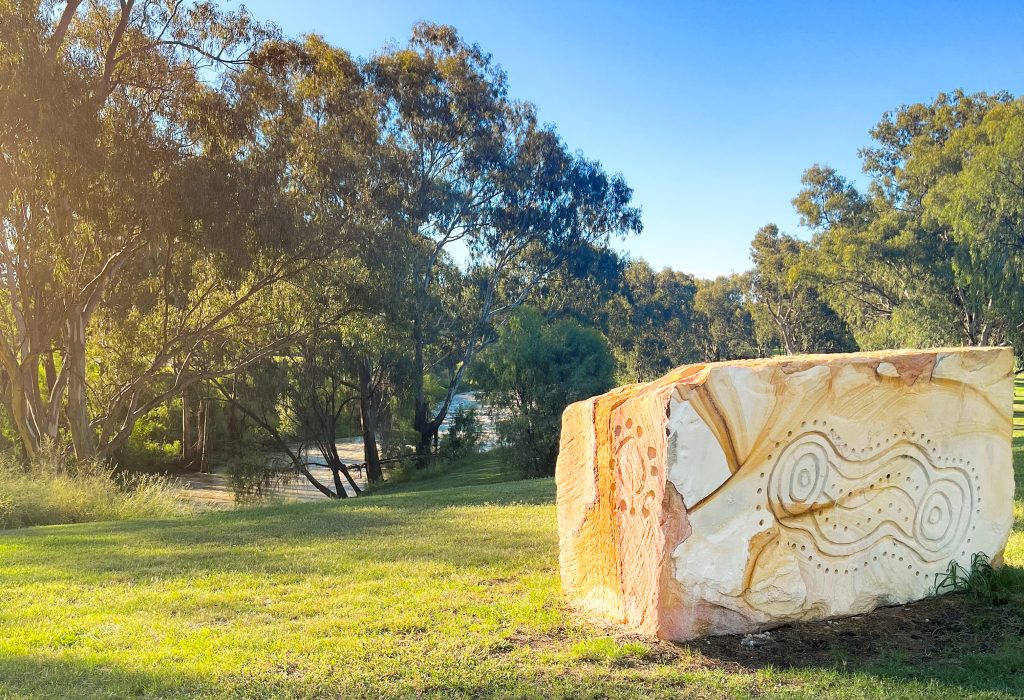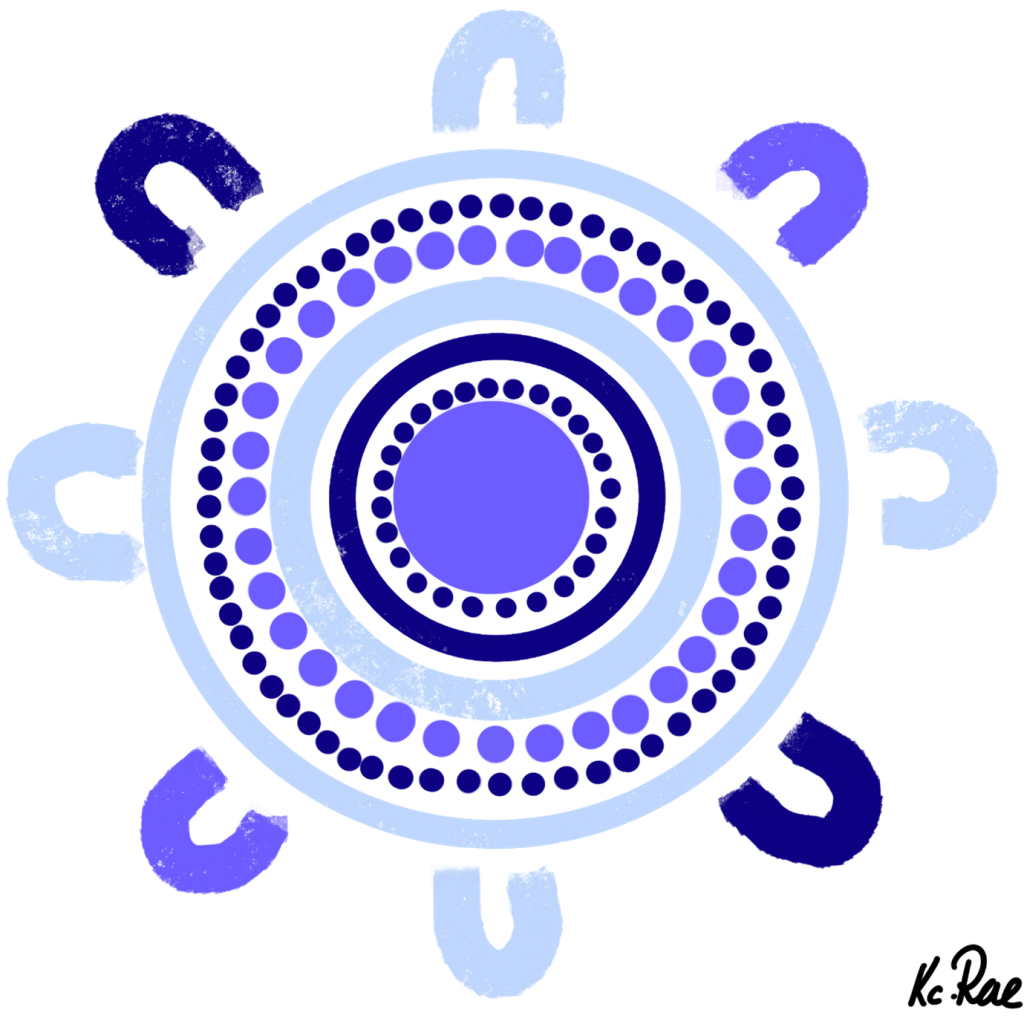First Nations Success
Kacie Fahey

INTRODUCTION
Tertiary education is a crucial element in closing the education gap between First Nations students and non-Indigenous students. Higher levels of education have been linked to improved outcomes in employment, health, life expectancy, income, and mental wellbeing within First Nations communities (Australian Institute of Health and Welfare, 2021). This chapter outlines several ways that First Nations students can build a deadly support network to help them reach their study goals, as well as provides supports to non-Indigenous students wishing to improve their allyship when they study and work alongside First Nations Australians.
BUILDING THE ‘UNI’ IN COMM-UNI-TY
The Australian higher education sector has made several necessary commitments to moving towards reconciliation, decolonisation, and recognition of historical barriers in accessing education by First Nations people. To this end, many universities offer an array of supports to help First Nations students to successfully navigate and complete their study journey. These supports are both formal and informal and are typically enacted through specified roles within the university’s structure, and through specific programs, units, and clubs. For First Nations students, it is important to access and utilise these services and supports when you feel like you may need some guidance in your studies. Accessing supports and resources early is the best way to maximise their impact; there is never any shame in asking for help.
Many Australian universities have a dedicated department or unit that specialises in First Nations student support. These units are culturally safe spaces for First Nations students to study, as well as to seek support with, or referrals to, a range of other services. Services may include:
- Admission and enrolment support
- Orientation programs
- Academic skills support
- Indigenous tutoring schemes
- Support with scholarships and bursaries
- Accommodation assistance
- Culturally safe advocacy.
In addition to a First Nations unit or department, many higher education institutions also embed First Nations-specific staff and roles throughout teaching teams, administrative services and academic support. This ensures First Nations students are comprehensively supported throughout their institution. As a First Nations student, engaging with First Nations staff, services and supports can be a very useful tool in improving your study experience and building your university support community.
As well as the formal supports mentioned above, there are several informal and social supports at university that First Nations students can often access while studying, including:
- Peer-to-peer learning and peer group study sessions
- University friends
- Mentors
- Clubs and associations
- Sports teams.
These informal supports are a great way to build positive relationships that can support your study, your wellbeing, and your overall university experience. Your university may host yarning circles, culture events, First Nations-specific peer-to-peer learning programs, and casual meetups for First Nations students and staff. You may also find that your Student Guild supports a First Nations student social club, which can be a culturally safe space to talk about anything from university to whether damper is better with butter or honey.
Your university support community is just like your personal support mob. They are there to guide you and help you achieve your goals. So, reach out to your First Nations supports and start building your ‘uni mob’ today!

“This piece depicts how both your personal mob and your ‘uni mob’ provide wrap-around, holistic support as you journey through your study experience. While family, friends, Aunties, Uncles, Ancestors, lecturers, support officers, study peers and First Nations uni programs all offer a variety of supports, they are all there to ensure that you not only succeed, but also enjoy your study experience.” Kc Rae, Aboriginal artist.
YaRN STRONG
Yarning is fundamental in establishing strong, reliable, and trustworthy connections in your university community. Whether it’s yarning with your lecturers, peers, support staff, or tutors, it’s important to be an active listener who is genuinely invested in hearing from other parties.
But what is yarning? Yarning is a valuable form of communication in Australian First Nations cultures and takes the form of one person speaking while another person, or group of people, genuinely and actively listens. Terare and Rawsthorne (2019) describes yarning as storytelling that utilises sound, silence, and non-verbal cues. Yarns can be quick, long, funny, serious, or informative, and their aim is to create knowledge, understanding and genuine connection (Bessarab & Ngandu, 2010; Walker et. al., 2014). All yarns carry meaning (Phillips et al., 2018) and are useful in developing connections that support help-seeking during your study journey. You can use yarning to build peer relationships, seek out mentors, discuss the stressors of studying, share study tips and tricks, or share concerns about the challenges of working and being a student. Yarning aims to build a judgment-free dialogue that encourages knowledge-sharing and learning, and because of this, yarning has been shown to have positive impacts on one’s health and wellbeing (Terare & Rawthorne, 2019) which is useful in maintaining balance physically, mentally, and spiritually.
Yarning helps us learn from others and be reflective of those learnings. By engaging in yarning authentically, you will be able to better engage with your ‘uni mob’ and create deeper and more meaningful connections that will help support you throughout your study.
TWO-WAY LEARNING
Two-way learning, or both-way learning, is a learning paradigm which notes that there is togetherness to be found by non-Indigenous and First Nations people learning from each other’s perspectives (Johnston & Forrest, 2020). Two-way learning encourages us to “walk in both worlds” and amplifies First Nations ways of knowing, being and doing (Johnston & Forrest, 2020). If you are a non-Indigenous student, university is a fantastic time to engage in two-way learning as higher education institutes are often full of diverse students and staff who may wish to share their cultural knowledge with you, in an exchange of learning. If you are a First Nations student, two-way learning is a fantastic opportunity to share culture and knowledge, which supports truth-telling efforts and reduces individualised racism (Johnston & Forrest, 2020). Two-way learning benefits all parties involved by making them more engaged learners, and more reflective communicators. Additionally, this learning process assists with decolonial efforts, advocacy and allyships, as well as awareness raising and education about First Nations cultures and practices (Johnston & Forrest, 2020).

“This image depicts the two-way or both-ways learning process. Notice how the footprints, or tracks, are travelling from both locations to the other? In this piece, a deep red represents one group, and a burnt orange another. Along their journey to each other’s site of knowledge, they are sharing their own ideas and experiences, depicted by the small dots in their associated colours. This piece reminds us that two-way learning is not a one—directional transaction.” Kc Rae, Aboriginal artist.
INCLUSIVE LANGUAGE
Inclusive language is important in making everyone feel safe, valued, and respected (see the chapter Successful Connections for further discussion). It is a powerful element of your academic writing toolkit that ensures your writing is relevant, accurate, and respectful (Diversity Council Australia, 2016). Learning how to write respectfully about First Nations Australians, their communities, and their cultures is a beneficial skill for all university students to learn as it has applications throughout many industries and professions. Below are some examples to guide you in writing respectfully about First Nations Australians (see Table 4.1). It is important to note that while there is no single guideline on when to utilise certain terms, or whether terms are interchangeable, your higher education institution may have a respectful languages guide or appropriate terminology guide that you can use to assist your writing. There are many terms in the table below that may not be familiar to you. To make sure you understand them and are using them appropriately you are encouraged to do some additional reading, refer to the Glossary at the end of this book, or talk with a First Nations advisor or support officer at your university.
Table 4.1 Guide to writing respectfully about First Nations Australians
| Category | Inclusive and Appropriate Terminology |
| People and positions | Aboriginal* Torres Strait Islander* First Nations* First Peoples* First Australians* Indigenous* Elders* Aunty* Uncle* Country Specific (e.g., Kamilaroi* people) |
| Nations and groups | Country (e.g., Wakka Wakka Country*) Traditional Custodians* Traditional Owners* Land (e.g., Bundjalung land) |
| Historical events and truth-telling | Invasion Colonisation Stolen Invasion Day* Day of Mourning* Survival Day* Pre-invasion history Pre-European history |
| Spirituality | The Dreaming* Dreaming stories Creation stories Spiritual beliefs Lore |
| Ceremonies and significant events | Smoking Ceremony Acknowledgment of Country* Welcome to Country* Sorry business Men’s business Women’s business |
* As a sign of respect, these words or phrases should be capitalised at all times (Australian Public Service Commission, 2023; Australians Together, 2020).
CONCLUSION
Universities are places that welcome and include all students, including First Nations students. As a First Nations student there are many opportunities for you to connect with your ‘uni mob’ who will be there to support, guide, and celebrate with you as you work towards your study and career goals. As a non-Indigenous student, you can listen to, and learn from, First Nations perspectives, and contribute to inclusive environments. Whether you are a First Nations student or non-Indigenous student, university is a fantastic time to grow and build unique connections.
Key points
- Universities offer First Nations-specific supports, which may include tutoring, academic skills support, enrolment guidance, peer group development, and wellness support.
- Yarning is a useful tool for both First Nations and non-Indigenous people to use in establishing respectful communications.
- Two-way learning helps build cultural connections between First Nations students and staff, and non-Indigenous students and staff.
- Inclusive language is beneficial for all students while studying and for their future professions.
References
Australian Institute for Health and Welfare. (2021). Australia’s welfare: snapshots. Indigenous Australians. Indigenous education and skills. https://www.aihw.gov.au/reports/australias-welfare/indigenous-education-and-skills
Australian Public Service Commission. (2023). Style manual. Aboriginal and Torres Strait Islander peoples. https://www.stylemanual.gov.au/accessible-and-inclusive-content/inclusive-language/aboriginal-and-torres-strait-islander-peoples
Australians Together. (2020). Language and terminology guide. Australians Together. https://australianstogether.org.au/assets/Uploads/General/AT-Language-and-Terminology-Guide-2020.pdf
Bessarab, D. & Ngandu, B. (2010). Yarning about yarning as a legitimate method in indigenous research. International Journal of critical Indigenous Studies. 3(1), 37-50.
Diversity Council Australia. (2016). Words at work. Building inclusion through the power of language. Diversity Council Australia. https://www.dca.org.au/sites/default/files/dca_wordsatwork_overall_guide.pdf
Johnston, M., & Forrest, S. (2020). Two ways. Stories of cross-cultural collaboration from Nyoongar Country. Springer. https://link.springer.com/content/pdf/10.1007/978-981-15-4913-7.pdf
Phillips, L., Bunda, T., & Quintero, E. (2018). Research through, with and as storying. Routledge.
Terare, M. & Rawsthorne, M. (2019). Country is yarning to me: Worldview, health and well-being amongst Australian First Nations People. British Journal of Social Work. 50, 944-960. https://doi.org/10.1093/bjsw/bcz072
Walker, M., Fredericks, B., Mills, K., & Anderson, D. (2014). Yarning as a method for community based health research with Indigenous women: The Indigenous Women’s Wellness Research Program. Health Care for Women International, 35(10), 1216-1226.
ACKNOWLEDGMENTS
I would like to acknowledge my colleague, Sam Conway, for his contribution to the discussion on yarning in this chapter.

